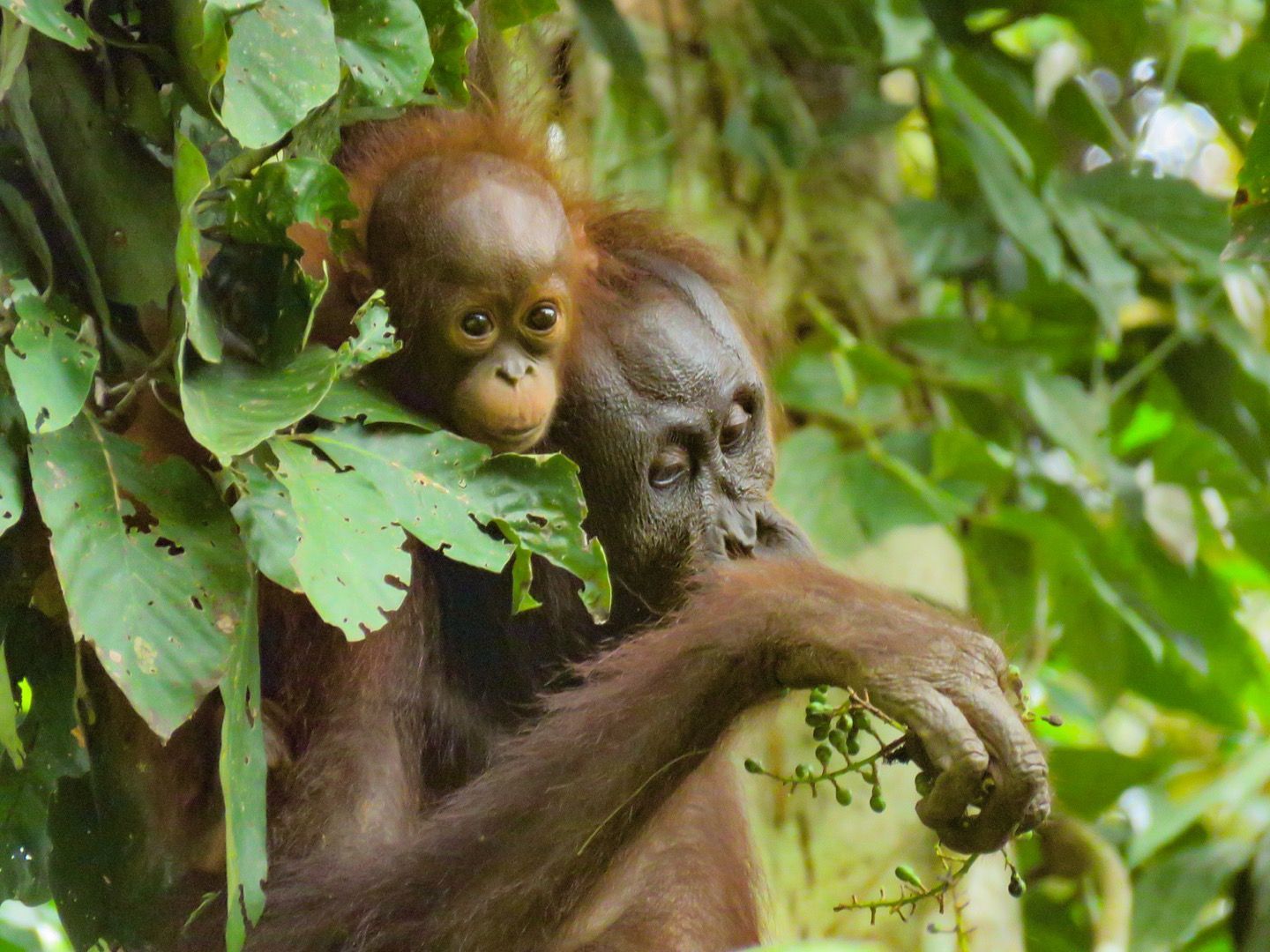
Bukit Piton
Written by Aleena Che Ramli
- Location: Bukit Piton
- Nearest city: Lahad Datu
- Category IA: Strict nature reserve.
- Country: Sabah, Malaysia
- Coordinates: 5̊ 09' N / 118̊ 00' E
- Area: 11,612 hectare
Bukit Piton Forest Reserve or formerly known as Northern Ulu Segama is located in east Sabah, along the upper part of the Ulu Segama river on the boundaries of the Danum Valley. It forms part of the Ulu Segama Malua Forest Reserve, formerly gazetted under a Class II {commercial} forest reserve. Later in March 2012, it was regazetted as protection forest reserve {Class I}, covering an area of 11,612 hectare. The vegetation is mainly logged over lowland mix dipterocarp forest which was restored since 2007.
Bukit Piton Forest Reserve is one of the vital habitat forest for orang utan in Sabah. This area is known to have a high concentration of wild orang utan {Pongo Pygmaeus Morio} population, which is listed as endangered in IUCN red list of threaten species in 2000. According to WWF Malaysia, Bukit Piton was estimated to have about 170 of orang utan in 2007 and has increased to 300 in 2008. This particular population is totally isolated from the other larger population in the Ulu Segama Forest Reserve. It is due to the vast expanses of oil palm plantation, bordering north Ulu Segama to the north and east on the southern part of Segama river that acts as a physical barrier between the two groups.
Since 2007 to 2017, WWF Malaysia, Yayasan Sime Darby and Sabah Forestry Department has restored approximately 2,099 hectares of the targeted 2,400 hectare of degraded orang utan forest habitat in the north Ulu Segama. Poor logging practices in the year of 1980s until 2007, combined with drought-induced forest fires in 1983 and 1997 - 1998 has caused a severe degraded landscape within the forest. As a result, some part of the area were treeless with much of the rest with poor tree cover and depletion of wildlife habitat especially for orang utans. The 10 year project has successfully recorded the planting of almost 300 000 trees from 99 species, that serve as food sources for the orang utan and other wildlife in Bukit Piton. The open and exposed areas were planted with fast growing pioneer species such as Binuang {Octameles Sumatrana} and Laran {Neolamarckia Cadamba} in areas shaded by forest canopies, as well as shade tolerant species like the dipterocarps tree species which are known to produce fruits edible to orang utans such as Sengkuang {Dracontomelon Dao}, Terap {Arthocarpus Sp} and Figs {Ficus Sp}.
In the late 2016, Bike and Tours and a non-profit organisation of Brothers Cycling from Switzerland are working with Kontractor Fajar for the ongoing joint project to continue to rehabilitate the Bukit Piton forest through ecotourism and tree planting. The current tree planting project is focus on a small scale area yet consistent, with the assurance of each and every tree will get a 5 years of maintenance in order to grow successfully. Some of the former replanting projects were only focused mainly on replanting the quantity of the seedlings, without a continuous planning for the cost of maintenance of the trees and caused the previous tree planting initiatives fell apart when the fragile seedlings unable to survive among the creepers and parasites for the source of light and space.
Nowadays, Bukit Piton has became a great place for wildlife spotting and bird watching and mainly popular for its wild orang utan in its natural habitat. There are an incredible number of wildlife can be found here including the endangered Bornean pygmy elephant, slow loris, Sambar deer, bearded pig, north Bornean gibbon, pig tailed macaque and a handful of bird species like the endangered helmeted hornbill, Black and Crimson Pitta, Blue Headed Pitta, Wallace’s hawk eagle and many more. This is an evidence that the restoration can bring back the good health of the severely degraded commercial forest reserve and improve the population of wildlife Within the area.
References:
- https://wwfmy.awsassets.panda.org/downloads/factsheet_forest_restroration_221015_2.pdf
- https://www.wwf.org.my/about_wwf/what_we_do/forests_main/restore/orang_utan_habitat_restoration_in_bukit_piton_class_i_forest_reserve__lahad_datu_sabah_/
- https://www.bikeandtours.com/en/malaysia/sabah/borneo-east-sabah/danum-valley-conservation-area/orang-utan-bukit-piton/reforesting-brothers-cycling#bukit%20piton
- http://www.dailyexpress.com.my/news/129373/restored-bukit-piton-can-be-model-forest-reserve/
- https://wwf.panda.org/?209809/The-Forest-Restoration-Programme-in-Bukit-Piton-Forest-Reserve-Class-I-Sabah-Malaysia
- http://www.forest.sabah.gov.my/usm/Wildlife_Manage...
- http://www.forest.sabah.gov.my/usm/
